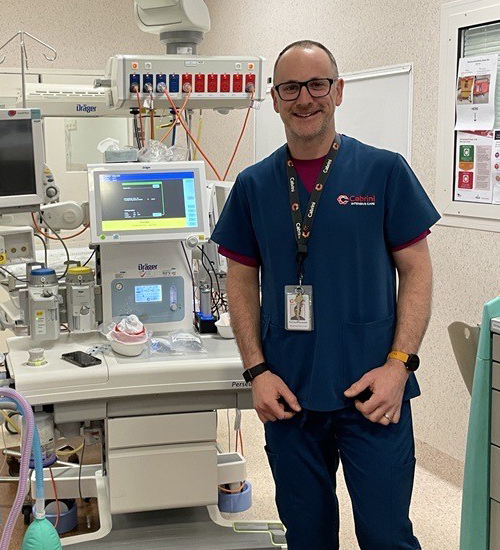Breathing breakthrough: Cabrini’s global airway management guidelines
25/09/2024

In a significant advancement for critical care medicine, a new set of international guidelines for managing physiologically difficult airways has been developed. These guidelines, published in the prestigious journal Intensive Care Medicine (ICM), aim to improve patient outcomes during intubation procedures for critically ill patients.
The need for new guidelines
Professor David Brewster, a key contributor to these guidelines and head of the Cabrini Critical Care Anaesthesia Research department, explains the significance: “We have previously showed that successful intubation correlates with improved survival. Failure to intubate on the first attempt resulted in an increase in observed mortality in this patient group.”
The guidelines were developed in response to findings from the INTUBE study, published in the Journal of the American Medical Association (JAMA), which demonstrated the crucial link between successful intubation and patient survival rates. With mortality rates exceeding 10% for critically ill patients requiring intubation, and a 3% risk of cardiac arrest during the procedure, these guidelines aim to standardise best practices and potentially save lives.
Development process
The new guidelines were convened by the Society of Critical Care Anaesthesiologists (SOCCA) Physiologically Difficult Airway Task Force. A seven-person international steering committee, including Professor Brewster and other experts from various countries, oversaw the process.
Professor Brewster describes the rigorous methodology: “We used a Delphi process to come up with a consensus on best practices. We invited 40 international experts from around 16 countries to participate.” The expert panel, representing diverse backgrounds in anaesthesiology, intensive care, and emergency medicine, worked through multiple rounds of consensus-building to develop the final set of recommendations.
Key recommendations
The guidelines cover various aspects of airway management, including:
- Equipment choice: Strong recommendation for the use of video laryngoscopy as a first-line tool.
- Team structures: Emphasis on human factors and safety protocols.
- Preparation processes: Implementation of checklists to ensure readiness and shared mental models among team members.
- Drug selection: Guidance on the use of neuromuscular blocking agents, with a shift away from suxamethonium in certain situations.
- Post-intubation care: Focus on confirming correct tube placement and implementing lung-protective ventilation strategies.
Potential impact and challenges
The publication of these guidelines in a high-impact journal like Intensive Care Medicine is expected to facilitate widespread adoption. Professor Brewster notes, “By being in ICM, I think we are putting the paper out to a readership that needs to see it.”
However, challenges remain, particularly in resource-limited settings and among clinicians accustomed to different practices. Professor Brewster acknowledges, “Resource limitation is probably the biggest challenge. If you’re trying to get people to use video laryngoscopy, when it is not available, it’s difficult.”
Future directions
The guidelines are expected to evolve with user feedback and advances in medical technology. Regular reviews, likely within a five-year timeframe, will ensure the guidelines remain current and relevant.
Professor Brewster expresses hope for the long-term impact: “We’re hoping that what we’ll see is better awareness of best practices and better outcomes for the patient long term. My hope is that it will lead to reducing the harm that can be caused by these procedures and more patients will be safely intubated for their surgery.”
As these guidelines are disseminated and implemented globally, they represent a significant step forward in standardising care for critically ill patients requiring intubation, potentially saving lives and improving outcomes in intensive care units worldwide.